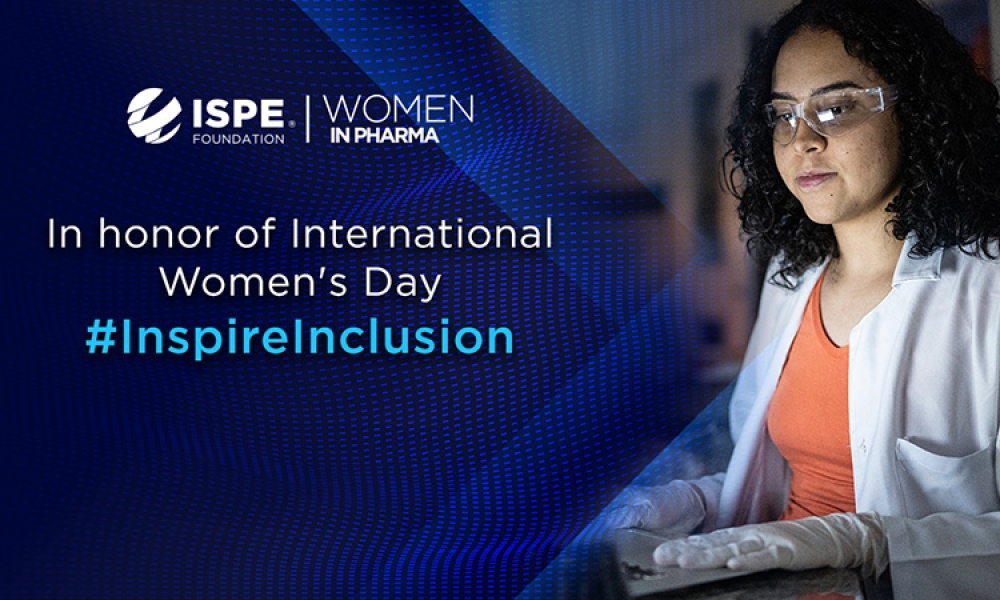2023 ISPE Biotechnology Conference: Keynote Presentations

The 2023 ISPE Biotechnology Conference opened on 26 June with a series of six keynote presentations on biotechnology and the development and manufacturing of advanced therapies. Tom Hartman, President and CEO of ISPE, introduced each of the keynote speakers.
Keynote Speakers
The first speaker, Michael Lohan, CEO of the Industrial Development Agency (IDA) of Ireland, stressed the importance of the biotechnology industry to the host country, as well as the value of having access to the European market and regulatory regime for biopharmaceutical and medical device companies in Ireland. In particular, Lohan discussed the ways companies are supported in their push to digitalize and embrace green manufacturing solutions.
Evdokia Korakianiti, Head of Quality and Safety of Medicines at the European Medicines Agency (EMA), spoke about the ways European regulators are supporting manufacturers, specifically via the work of a new group at the EMA. Jim Faulkner, PhD, Venture Partner at Apple Tree Partners, gave an overview of the role venture capital plays in the current success of biologics and what will be needed to bring other innovative therapies in the research and development (R&D) pipeline to market.
Cynthia Pussinen, Chief Executive Officer, Sernova, described what the biotech industry needs to reap the rewards of innovation. Michelangelo Can-zoneri, Global Head of Group Smart Manufacturing, Merck KGaA, laid out the strategy the company is using to evolve to smart manufacturing, with tools such as digital twins and modular type packaging. Peter Marks, MD, PhD,Director of the Center for Biologics Evaluation and Research (CBER) at the FDA, rounded out the keynotes with how the lessons learned during the COVID-19 pandemic can be applied to advanced manufacturing, including a communications pilot called Operation Warp Speed for Rare Diseases.
Enabling Biotech Innovation and Future Success in Ireland

Lohan highlighted the importance of life sciences advanced manufacturing to Ireland’s economic well-being. The IDA is an agency tasked with attracting and retaining foreign investment in technology, life sciences, and other industries. Its guiding strategy, Driving Recovery and Sustainable Growth, prioritizes investments in R&D, digitalization, talent development, and sustainability.1
For regulated industries, such as biopharmaceutical and medical device manufacturing, an Irish base provides access to the European regulatory framework and markets, robust R&D, and a skilled workforce to supply the industry with the specialized engineering skills and expertise required to design, build, commission, and validate facilities. Companies providing medical devices, small molecule active pharmaceutical ingredients (APIs), biologics, cell and gene therapies (C>s), and life sciences services have made these recent investments:
- AstraZeneca: €400 million in small molecule clinical manufacturing
- Eli Lilly: Increased investment to €1 billion in high-output advanced biologics manufacturing
- Dexcom: Building a medical device manufacturing site
- MSD: Biologics accelerator
- MeiraGTx: Gene therapy manufacturing facility
Digitalization, Green Manufacturing, and Collaboration Are Essential for Future Success
The IDA anticipates a coming wave of C> investment, as seen by the presence of manufacturers MeiraGTx, Takeda, and Pfizer. The IDA has invested €21 million to expand the National Institute for Bioprocessing Research and Training, including two new training facilities, to meet the needs of this growing sector.2 The evolution to Industry 5.0 requires companies to provide training for the workforce and challenges the IDA to help address this with access to technology, instructors, and de-risking investment through government funding, including the creation of a digital manufacturing center, Digital Manufacturing Ireland.3
Green manufacturing continues to grow with investments in solar energy by Eli Lilly and MSD, as well as the designation of Janssen Sciences Ireland as part of the World Economic Forum’s Global Lighthouse Network.
Partnerships and collaboration will lower the risk of innovation. The Disruptive Technology Innovation Fund, a €500 million fund of the Irish government, has supported projects in many areas, including smart wearables, the use of artificial intelligence (AI) for cancer diagnosis and treatment, remote patient monitoring, and blockchain for medical device cybersecurity.4
Patient Access through Innovation

Korakianiti shared the EMA’s goals to promote advanced manufacturing, as laid out in its strategic report, EMA Regulatory Science to 2025:5 catalyzing the integration of science and technology in drug development (including a focus on digital technologies) and enabling and leveraging research and innovation in regulatory science.
Korakianiti said that realizing the benefits of advanced manufacturing requires a predictable regulatory framework, exchange of information between drug developers and regulators, and regulatory convergence with other regions.
Quality Innovation Group
The Quality Innovation Group (QIG) is a team of EMA inspectors that supports the use of innovations in design, manufacturing, and quality control.6 The QIG works with academics and medical experts, regulatory agencies from other regions, and industry. Stakeholders can access scientific advice from the QIG, get help with an initial application, and receive input on reviews and inspections. The group’s near-term priorities are continuous manufacturing of biologics, decentralized manufacturing, and automation.
Its first focus group, on continuous and decentralized manufacturing, recommended to the European Commission a derogation of the rules for remote sites (e.g., hospitals) that require marketing and importation authorization (MIA), which includes compliance with cGMP and inspections.7 It also recommended a “regulatory sandbox” to allow the EMA to work with member states and developers to test altered requirements for products that provide great benefits to patients but cannot be developed in compliance with current regulations.
International outreach helps identify mutual priorities, including engagement on common guidance documents and collaborative assessment procedures. The EMA is a member of the International Coalition of Medicines Regulatory Authorities, which launched two pilot programs related to advanced manufacturing:8
- The ICMRA Pilot Program for Collaborative Assessment of COVID-19 Related CMC Post-approval Changes, which aims to avoid delays to approval times for postapproval changes9
- The ICMRA Pilot Program for Collaborative Hybrid Inspection to reduce travel restrictions and increase inspection capacity8
Advanced manufacturing is a key priority of the EMA to improve access, availability, and affordability of medicines to Europeans.
Future Biotech Portfolio: Challenges to Translate Biotech Innovation into Viable Therapeutics

Faulkner shared how venture capital firms are key to the success of companies developing novel drugs in a range of modalities, including gene editing platforms, oncolytic viruses, CAR T cell therapies, RNA therapeutics, and bioelectronics, including medical devices.
Faulkner identified three core themes that are woven throughout multiple modalities:
- Synthetic biology will continue to be important: This includes advanced therapies that exploit the immune system to fight cancer, alter the transcriptome, or manipulate cell-to-cell communication using tools like exosomes.
- Complex diseases require sophisticated solutions: The cause of virtually every known disease is multifactorial, so single-point interventions are unlikely to be effective. Yet combining multiple products is problematic. Advanced therapeutics, such as multifunctional molecules, will continue to take on greater importance.
- Delivery of therapeutics: Immune rejection, systemic side effects, and getting across the blood-brain barrier are challenges that might be overcome through targeted approaches.
Translating innovations requires being willing to throw away current paradigms that don’t work and inventing new processes and technology. This has to happen with cost in mind to ensure medicines are accessible to large numbers of patients around the globe. Getting a drug candidate to commercial production requires considering whether there are any single-source materials in the supply chain, the process has been vetted by regulators, and the process is transferable to a different manufacturer as well as the need to minimize the cost of goods and how to address scalability challenges.
Faulkner concluded with three things needed for future success: be ready for, and anticipate, change; ensure a company is prepared to evolve as circumstances change; and have courage to address innovative modalities that will create the most exciting upcoming medicines. Every adventure has a beginning.
Realizing the Full Potential of Advanced Therapies
Despite the challenges of advanced therapies manufacturing—failure rates in clinical studies, long timelines, and excessive drug development costs—Pussinen knows these products continue to provide an intellectual challenge and the chance to treat or cure diseases. The landscape for advanced therapies is rapidly evolving.
Among the 24 approved gene therapies, most treat hematologic cancers, though there is hope that some of the more than 2,000 gene therapies in clinical studies will extend to efficacy in solid tumors. In April 2023, Vertex Pharmaceuticals and CRISPR Therapeutics submitted the first CRISPR therapy for FDA approval, an ex vivo cell therapy for sickle cell disease and beta-thalassemia. Noting that the industry is at an inflection point of growth, Pussinen shared what needs to be done to achieve further success.10 ,11
The Challenges of CMC for Advanced Therapies
Preventing lengthy delays for biopharma manufacturing depends on the success in CMC deliverables. Pussinen noted that CMC issues cause more disruptions and delays in C>s than in monoclonal antibody development during phase 3 trials, regulatory submission, and especially regulatory review. Particularly vexing are insufficient CMC data packages, comparability/analytical issues, and site-inspection issues.
Pussinen offered advice in 11 areas where improvement is needed to speed the delivery of C>s, including:
- “The process is still the product”: Enter phase 1 trials with a process as close to what it will be for commercial production as possible. Leverage data with automation and digital twins.
- Analytical development: This needs to be started earlier than for other modalities. A range of assays should be used to understand the product, given lab-to-lab variability, variability of raw materials, and lack of reference standards.
- Manufacturing success: Whether to outsource, insource, or rely on a hybrid approach carries more risk for advanced therapies. Not all contract development and manufacturing organizations (CDMOs) have the experience needed to develop or commercialize a C>. The high cost of goods will likely decrease with improved titers and yield, and as the industry continues down the path of digital maturity.
- Talent scarcity: The demand for biomanufacturing talent and leadership is likely to outstrip supply in the near future due to an aging workforce and growth in the sector.
Merck’s Journey to Smart Manufacturing

Canzoneri pointed out that although 80% of manufacturers operate their facilities at level 2 of the Digital Plant Maturity Model (DPMM), few advanced therapy companies have fully leveraged the promise of Pharma 4.0™.12 Challenges abound, including multiple enterprise resource planning (ERP) systems with incompatible technologies, data silos, and the amount of unstructured data that cannot be leveraged without excessive manual work.
Smart manufacturing allows companies to use digital technologies and data analytics to optimize the way advanced therapies are developed, manufactured, quality controlled, and delivered. Canzoneri outlined the strategy and tactics Merck is using to transition to smart manufacturing.
The road to a predictive plant (DPMM level 4) or an adaptive plant (DPMM level 5) starts with expensive foundational change followed by digital transformation and ends with smart manufacturing. Canzoneri shared use cases demonstrating that time to market can be reduced by 83% through digital twin technology and labor productivity can be increased by 90% through the use of advanced analytics.
Antibody Production Digital Twin
There are different maturity levels of a digital twin, from one that virtualizes human–machine interfaces to one that models “lights-off” cognitive manufacturing. Merck’s digital twin of a monoclonal antibody (mAb) production process has cut process development time in half while reducing the use of materials and energy. Leveraging data and computational fluid dynamics, Merck is able to predict cell growth and titer. In the future, it hopes to be able to also predict quality attributes of the mAb.
Modular Manufacturing Sites
Plug-and-play modular type packaging (MTP), based on the OPC Foundation’s unified architecture (UA) and contextualized with additional data, allows Merck to plug any piece of equipment into its IT infrastructure. There it is recognized and augmented by, for example, a digital twin of the process.13
These projects are extending Merck’s smart manufacturing capabilities. Some are solely internal activities, such as distribution fleet management and track and trace, whereas others involve external partners, like supplier risk and inventory management.
Canzoneri advised companies planning on evolving to smart manufacturing to:
- Assess and prioritize the underlying problems to be addressed
- Identify gaps and the capabilities and technologies needed to address them
- Create a scalable roadmap to be implemented through collaboration among internal teams and external partners
The Importance of Manufacturing in the Development of Advanced Therapies

The rate-limiting step for the deployment of COVID-19 vaccines was neither clinical trials nor regulatory reviews, according to Marks. Instead, it was manufacturing: namely process development and scale-up. Accelerated COVID-19 vaccine development saw parallel-tracked clinical phases, and manufacturing scale-up to millions of doses began as soon as the vaccines showed promise.
Advanced manufacturing could have helped by providing agility, flexibility, reliability, and reproducibility of vaccine manufacturing through continuous, or semi-continuous, processes. It’s amenable to process control using real-time analytics and can lead to process improvements. Scaling production is easily achieved, either with an increase in the size and number of bioreactors or by using continuous manufacturing. The technology can be packaged in portable units, making rapid deployment of production possible anywhere in the world. “Advanced manufacturing offers the potential for improved agility, reliability, and cost reduction for the manufacturing of complex biological products,” Marks said.
Marks noted that the incredible promise of C> is hampered by manufacturing challenges, lengthy clinical development timelines, and varying regional regulatory requirements. CBER is addressing these challenges by supporting research in advanced manufacturing technologies, using accelerated approvals to reduce the length of clinical development, exploring global regulatory convergence, and initiating a communications pilot, Operation Warp Speed for Rare Diseases. Using the positive experience of frequent communication with sponsors during the pandemic, CBER hopes to use this pilot to accelerate the speed of development of rare-disease gene therapies. If successful, CBER might expand the pilot program to other products.
Automation might improve the commercial viability of gene therapies, which tend to have an exorbitant cost per dose. Companies could apply the closed systems with semi-automatic manufacturing used to make CAR-T cell therapies. The downstream process to produce an adeno-associated virus (AAV) vector for a gene therapy can also be automated, potentially leading to improved consistency—something that doesn’t exist now. CBER is also working with partners to develop a gene therapy fabrication device.
CBER, along with the Bespoke Gene Therapy Consortium, is looking for ways to encourage the use of similar methodologies, which should allow more smooth technology transfers from academics to contract manufacturers. There are also changes to legislation that should allow manufacturers to leverage nonclinical data and manufacturing information from an approved product (e.g., a vector backbone with a gene insert) for another product, thus reducing the regulatory burden.14
Conclusion
These insights from government agencies, regulators, investors, and industry underscore how exciting this time is for the production of advanced therapies. There are challenges, but they are surmountable. As Faulkner said, “Every adventure has a beginning, and it takes courage to step out of what you’ve been doing for many years. It’s going to take courage for us as engineers to change what we’re doing and address these modalities that are going to create some of the most exciting medicines of the future.”
Disclaimer
This article contains an abridged, unofficial summary of regulators and industry panelists’ responses and discussion during a panel dialogue at an ISPE conference that has not been vetted by any agency or organization. The responses are an informal and brief synopsis of the panel’s views, and do not represent official guidance or policy of any agency or organization.
- 1IDA Ireland. “Driving Recovery and Sustainable Growth 2021-2024.” September 2023. www.idaireland.com/driving-recovery-and-sustainable-growth-2021-2024/
- 2National Institute for Bioprocessing Research & Training. September 2023. www.nibrt.ie/
- 3Digital Manufacturing Ireland. “Transforming Value Chains Through Innovative Technology Adoption.” September 2023. www.dmireland.org/
- 4Department of Enterprise, Trade and Employment. “Disruptive Technologies Innovation Fund.” September 2023. https://enterprise.gov.ie/en/what-we-do/innovation-research-development/disruptive-technologies-innovation-fund/
- 5European Medicines Agency. Chairs of the Scientific Committees. “EMA Regulatory Science to 2025.” Published 2020. www.ema.europa.eu/en/documents/regulatory-procedural-guideline/ema-regulatory-science-2025-strategic-reflection_en.pdf
- 6European Medicines Agency. “Quality Innovation Group.” September 2023. https://www.ema.europa.eu/en/committees/working-parties-other-groups/chmp/quality-innovation-group
- 7European Medicines Agency. Humans Medicines Division. Quality Innovation Group. “Listen and Learn Focus Group (LLFG) Meeting Quality Innovation Group (QIG).” 13 March 2023. www.ema.europa.eu/en/documents/report/report-listen-learn-focus-group-meeting-quality-innovation-group_en.pdf
- 8 a b European Medicines Agency. “International Coalition of Medicines Regulatory Authorities (ICMRA).” September 2023. www.ema.europa.eu/en/partners-networks/international-activities/multilateral-coalitions-initiatives/international-coalition-medicines-regulatory-authorities-icmra
- 9“Implementation Plan: ICMRA Pilot Program for Collaborative Hybrid Inspection.” September 2023. www.icmra.info/drupal/sites/default/files/2022-06/overall_plan_for_collaborative_hybrid_inspection.pdf
- 10American Society of Gene and Cell Therapy. “Read ASGCT’s 2023 Q1 Landscape Analysis.”18 April 2023. https://asgct.org/publications/news/april-2023/read-asgct-s-2023-q1-landscape-analysis-field-repo
- 11Kingwell, K. “First CRISPR Therapy Seeks Landmark Approval.” Nature 3 (April 2023). www.nature.com/articles/d41573-023-00050-8
- 12Anttonen, E., H. Begi, M. Dubs, I. Helliwell, and J. Selva. “The Development of a Digital Plant Maturity Model to Aid Transformation in Biopharmaceutical Manufacturing,” BioPhorum Operations Group. September 2023. www.biophorum.com/wp-content/uploads/bp_downloads/Digtal-Plant-Maturity-Model-White-Paper.pdf
- 13“Unified Architecture.” OPC Foundation. September 2023. https://opcfoundation.org/about/opc-technologies/opc-ua/
- 14National Institutes of Health. “Bespoke Gene Therapy Consortium.” 13 June 2023. www.nih.gov/research-training/accelerating-medicines-partnership-amp/bespoke-gene-therapy-consortium
Acknowledgments
ISPE thanks the panelists for their presentation. The 2024 ISPE Biotechnology Conference will be 17–18 June in Boston, Massachusetts. For more infor-mation or to submit a proposal for the conference, visit ISPE.org/conferences




